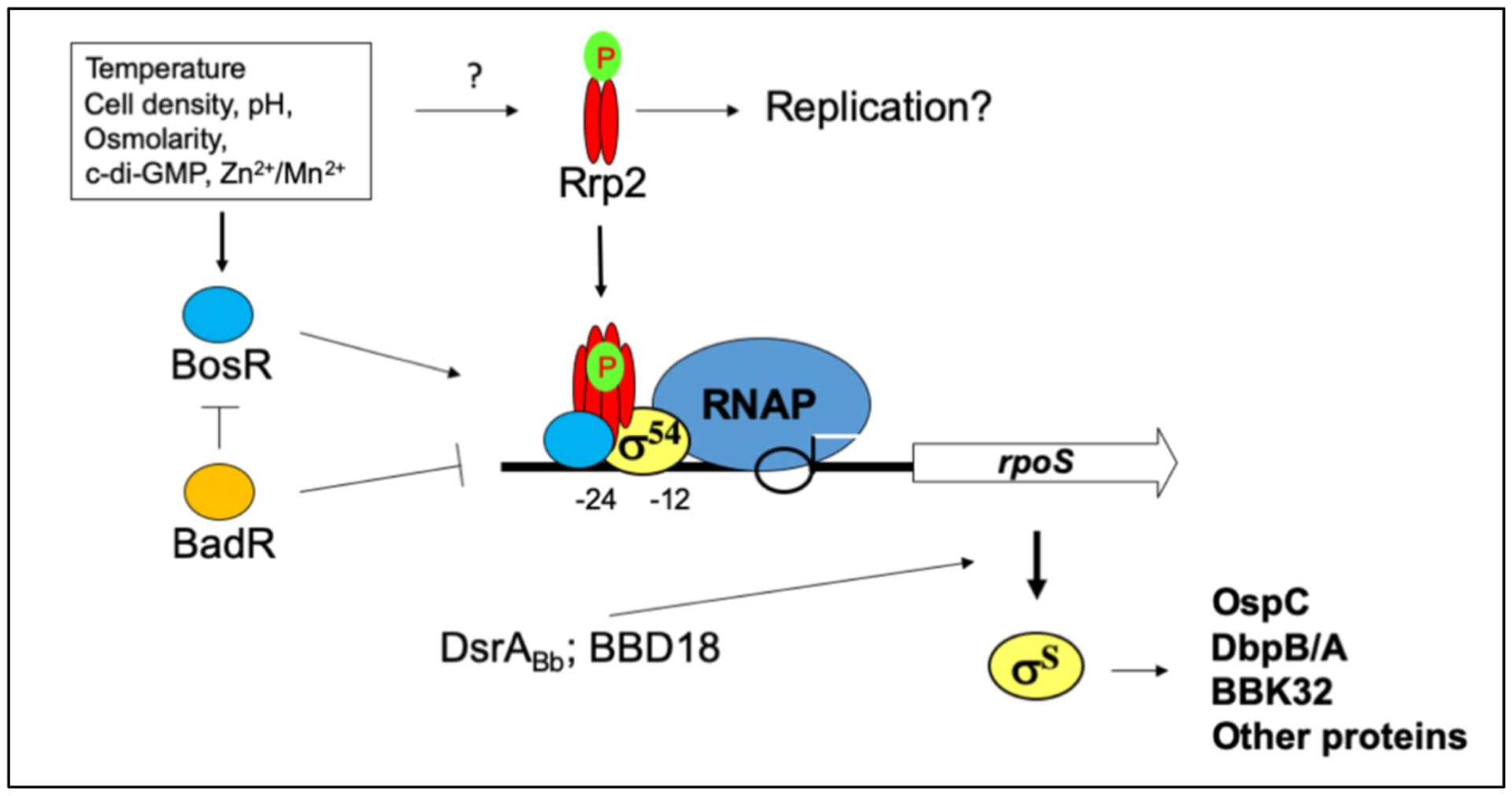Figure 2.

A model of the RpoN-RpoS σ factor cascade. During tick feeding and mammalian infection, environmental and host signals activate the RpoN-RpoS σ factor cascade. Activation of RpoN requires phosphorylation of Rrp2 and accumulation of BosR. Rrp2 is the sole prokaryotic enhancer-binding protein present in B. burgdorferi that is required for RpoN (σ54) activation. Phosphorylation of Rrp2 not only is required for RpoN-RpoS activation, but also is indispensable for cell survival, presumably replication. Levels of BosR respond to environmental signals and accumulation of BosR activates rpoS at its RpoN-dependent promoter via an unknown mechanism. BadR represses rpoS transcription by directly binding near the RpoN-dependent promoter region. In addition to the major rpoS mRNA species transcribed from the RpoN-dependent promoter, a longer rpoS transcript is produced at low cell density from an RpoN-independent promoter located within the upstream flgJ gene. The sRNA DsrABb regulates the efficiency of long rpoS mRNA species translation in response to temperature. DDB18 can regulate RpoS (σS) levels at the post-transcriptional level. Accumulation of rpoS transcript leads to the production of OspC, DbpA, DbpB, BBK32, and other mammalian infection-associated proteins.
